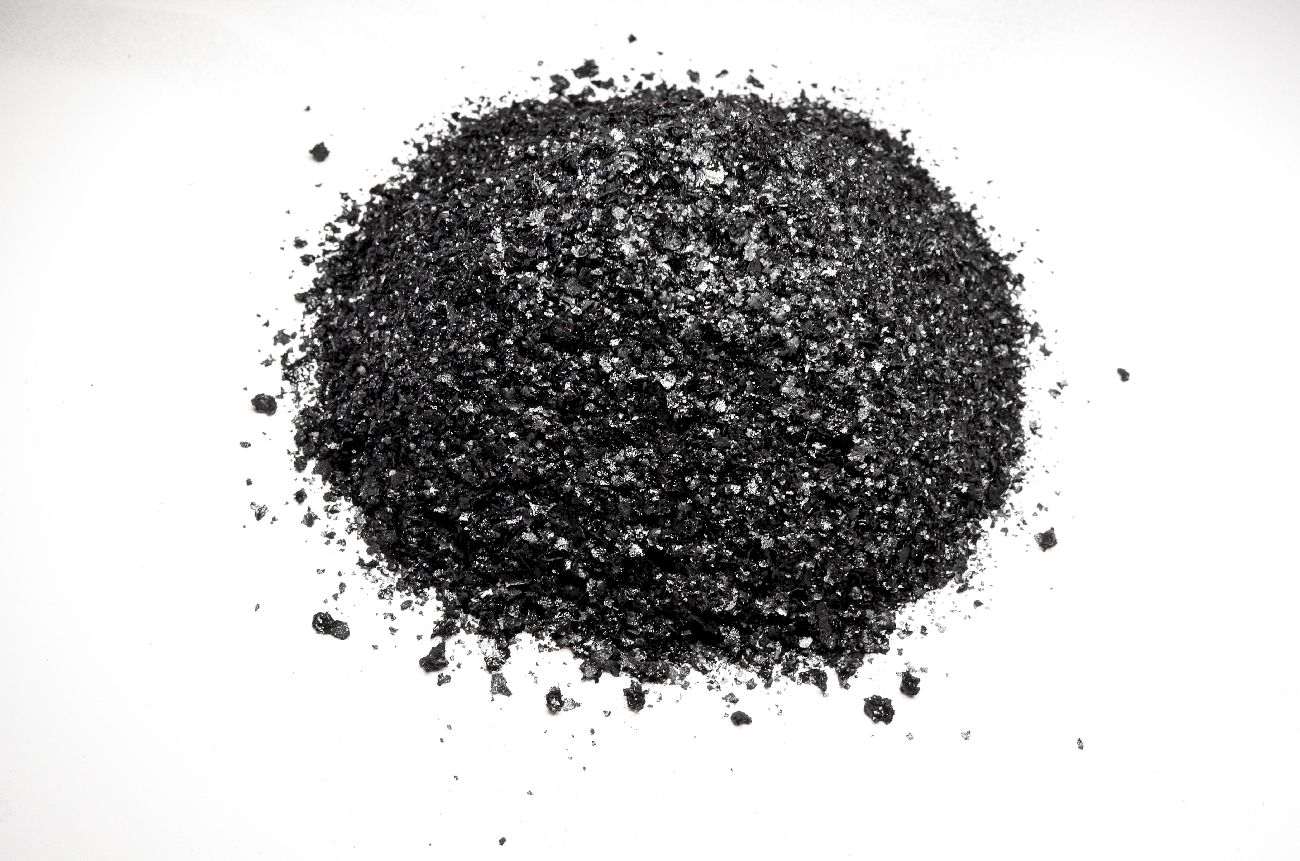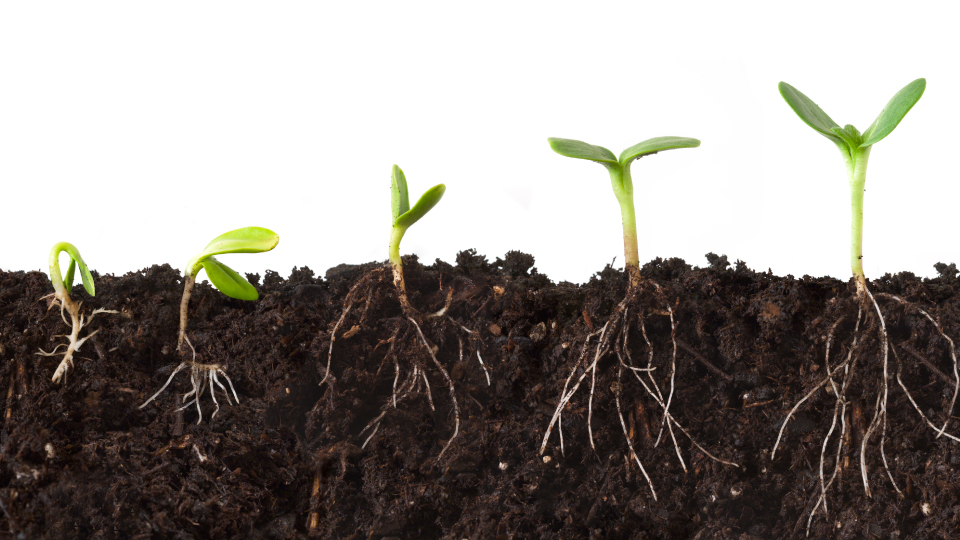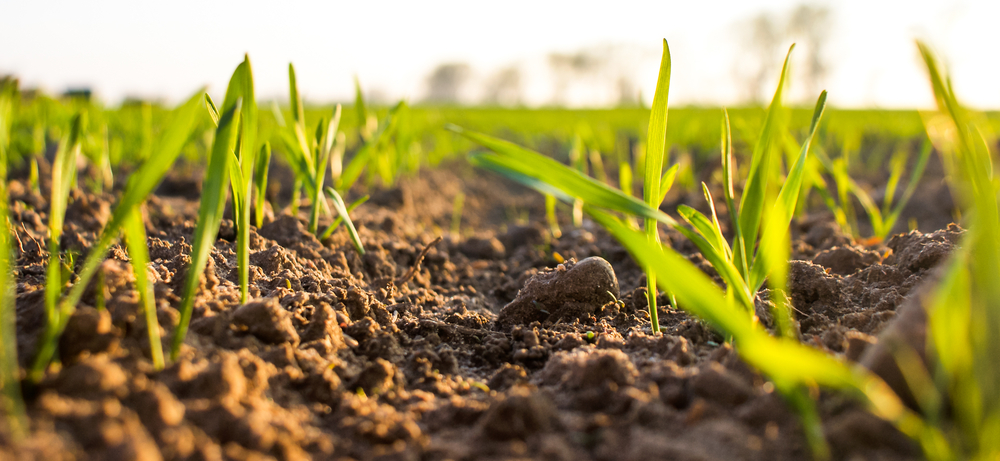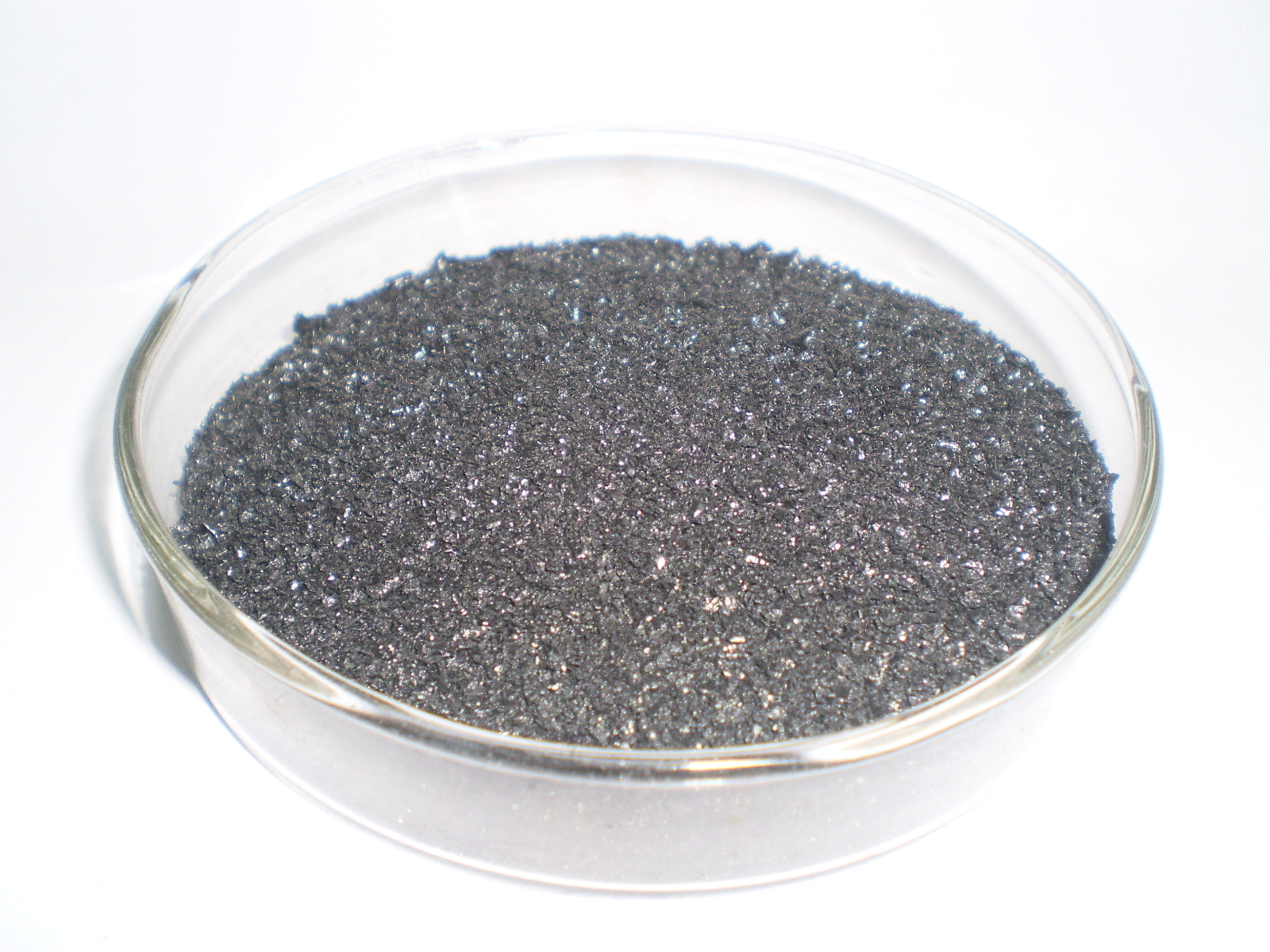Potassium Humates – Feed Your Microbes
The Best Pure Carbon Concentrate
If you want the best quality potassium humate product available in the market place consider the No Frills Humates.
Not all humates are created equal.
After rigorous (European) scientific research of popular humates sold in Australia, No Frills humates have been shown to be the highest quality Humic Materials available in the market place.
No Frills’ humates provide carbon which penetrates the soil providing a solid bridge between all soil components. This creates a vastly improved soil structure making the soil significantly more resilient to moisture loss and nutrient stress.
In a nutshell, humates interact with all soil processes making the soil work more efficiently
What they are
Humates can be defined as the salts or concentrated form of these humic acids (in turn, fulvates are referred to as the concentrates or salts of fulvic acids).
Humic substances play a vital role in plant nutrition and soil fertility, and are now recognised by many soil scientists as the single most productive input in sustainable agriculture.
As a material, humic substances are natural products that are formed following the biological and chemical breakdown of organic matter over an extended period of time (thousands of years), whereby humus is separated from non-humic substances (such as carbohydrates, fats, proteins and amino acids) by natural decomposition within the soil.
Another way to describe them is – “They are concentrated ancient compost”
As a material, these humic substances are the most chemically active compounds in soils, with cation and anion exchange capacities far exceeding those found within clay.
These humic substances consist primarily of three major fractions including humic and fulvic acids, and raw humin (prehistoric plant and animal matter). With these three subdivisions based on the solubility of each of these fractions in water adjusted to different pH levels
Fulvic Acid: soluble at any pH, smallest molecular weight, dominant in Oxygen
Humic Acid: soluble at pH > 7 medium molecular weight, balance in Oxygen and Carbon
Humin: insoluble at any pH, largest molecular weight, dominant in Carbon
These three components which make up humic substances (humin, humic acid, and fulvic acid) each play a different role in providing benefits to plants grown within the soil medium.
Humin
Of these three fractions, humin has the highest molecular weight (and thus plants respond to it slower). As the humate composition of any humic substance is specific to the substances geographic location, origin material, and degree of decomposition, there can be a large variability in the molecular composition of this humin fraction.
Nonetheless, in general humins are not soluble in water at any pH, are macro-organic and are very resistant to decomposition. However, humins also perform many functions within soils themselves, improving the soils structure, water holding capacity, stability, and soil fertility (including its cation exchange capacity).
Humic acids
Humic acid is a larger more complex molecule than its fulvic acid counterpart, with its main benefits being those it imparts on the soil physical structure. These benefits include increasing the cation exchange capacity, improving soil structure, and its inherent ability to hold up to 16 times more minerals than clay.
Alongside this, humic acids can complex with elements such as nitrogen (making it less volatile and prone to leaching), phosphorus, zinc and calcium, and can also release potassium via penetrating between clay particles and making it more available for plants. Humic acids have also been noted to readily form salts and bind with inorganic trace mineral elements (over 60 different minerals) in a form that is readily available for uptake by various organisms. Furthermore, these humic acids have also been utilised in the past to stimulate microorganisms, and clean up toxic soils (including soils with high levels of pesticides and heavy metals).
Fulvic acids
Fulvic acids are the smallest molecules of the three main fractions which make up humic substances and are soluble in water at all pH conditions. As a molecule its presence has many important benefits to plants (as fulvic acids are involved in chemical reactions in the soil that influence plant metabolic processes).
These include its ability to promote cell growth (similar to the effects of auxins), stimulate oxygen uptake improving drought and heat tolerance (as its oxygen content is twice that of humic acids), and immobilise minerals within plants themselves including iron, magnesium and calcium.
It is also highly chemically reactive, with their exchange capacity found to be twice that of humic acids. Also, due to their relatively small size, fulvic acids are able to readily enter plant roots, stems and leaves, making it ideal as a foliar spray when used as a primary production technique for maximising plant productivity. These fulvic acids are thus able to carry these trace minerals directly into tissues and metabolic sites. Alongside this, fulvic acids are also the most effective carbon containing chelating compound known, and are also non toxic at low concentrations.
Benefits of humic substances
In their most general form, humic substances are the components of humus made up of complex carbon chains composed primarily of carbon, oxygen, hydrogen, nitrogen and sulphur.
These substances resemble a black, hydrophilic powdery substance mined from the earth, with their composition, structure and functional groups varying depending on their age and origin. Nonetheless, the presence of this substance in a soil has a number of benefits on plants grown within the area, with studies showing plants grown on soils containing adequate humin, humic acids and fulvic acids being healthier, less subject to stress, higher yielding, and of higher nutritional value.
Alongside this, the presence of these complex organic compounds (humic substances) within a soil function to provide soil structure, porosity, water holding capacity, available carbon, the promotion of cell growth, improved cation exchange capacity (via the chelation of cations within the soil), and are involved in the chelation of mineral elements. Furthermore, the presence of these substances have also been found to work similar to a surfactant (wetting agent), solubilizing hydrocarbons into water phases.
Humic substances are renowned for their ability to improve a variety of soil areas including:
Physical conditions of the soil (mainly via humic acid )
- improve soil structure, texture, looseness, friability and decrease soil erosion
- improve water holding capacity for better drought resistance and reduction in water usage (Russo and Berlyn, 1990): (this is because of the large surface area and internal electrical charges humic substances have, allowing them to hold up to seven times their volume in water according to Pettit, 200.)
- improve drainage
- increase oxygen in the soil (stimulating microorganisms and providing better aeration)
- buffering properties (prevention of rapid changes in soil acidity related to humic substances and their ability to assist the soil in accepting or donating free hydrogen ions)
- improve soil wetting ability
Mechanical conditions (humates)
- support larger, stronger root systems via favourable conditions
- desirable environment for beneficial microorganisms and stimulate soil biological activity (good source of energy for soil organisms)
Soil Chemical activity and biochemical activity (contribute to) (mainly via both humates and fulvates)
- further active disintegration of soil rock and release of nutrients
- chelate soil nutrients
- improve nutrient uptake: especially phosphorous, sulfur and nitrogen (cell wall membrane becomes more permeable and humic substances provide a high ion exchange capacity)
- neutralisation of soil chemical substances that may cause plant toxicity
- reduce the need for nitrogen fertilization
- provide micro-elements (vitamins and minerals) necessary for plant development
- remove toxins from soils
- accelerate seed germination (when treated with humate water)
- better plant resistance to stress and disease
- solubilize minerals
- act as a storehouse of N, P, S, and Zn (nutrient holding ability) (Frank and Roeth, 1996)
General plant growth stimulation
- improved seed germination
- greater fibrous root growth
- increase in legume root nodule formation
- greater resistance to insects
- greater resistance to drought and frost
Potassium humate
Potassium humate is the potassium salt of humic acid extracted from raw humic deposits known as Leonardite, to be used as a soil conditioner
Fulvic acid powder
In brief works as a natural chelating agent that increases nutrient uptake, promotes beneficial microbes, increases crop yield and quality and improves availability of minerals.
Conclusion
Humic substances are the key ingredient to fertile soils and healthy plants, maximising the efficient use of residual plant nutrients, reducing fertiliser costs, and releasing nutrients bound in minerals and salts. Furthermore, their addition will improve crop yields and quality whilst also undoing the damage caused by acidic fertilisers and pesticides, in order to develop a more biological and sustainable production system.
What does this mean for the Home Gardener?
Want to Know More?
Feel free to call to discuss more about our humates.
Enquire about our soil testing or analysis consultations.
References
Jackson, R., 1993. Humic, fulvic and microbial balance: Organic soil conditioning. Jackson research centre.
Pettit, R. E., unknown. Organic matter, humus, humate, humic acid, fulvic acid and humin: their importance in soil fertility and plant health. A&M University, Texas
Tan, K.H., 2003. Humic Matter in Soil and the Environment. Marcel Dekker, New York.



